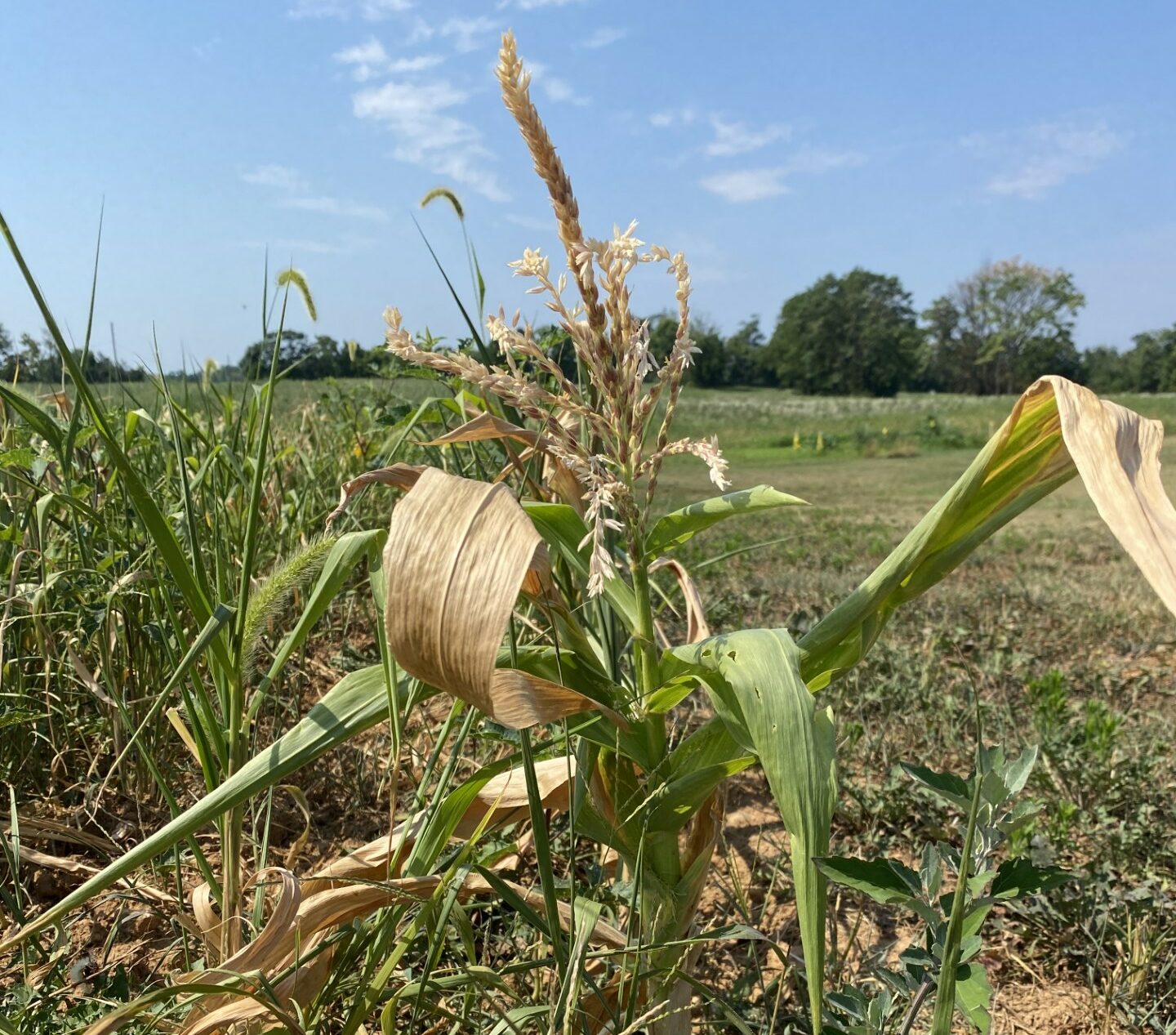Vermont
Vermont is bringing back missing middle housing
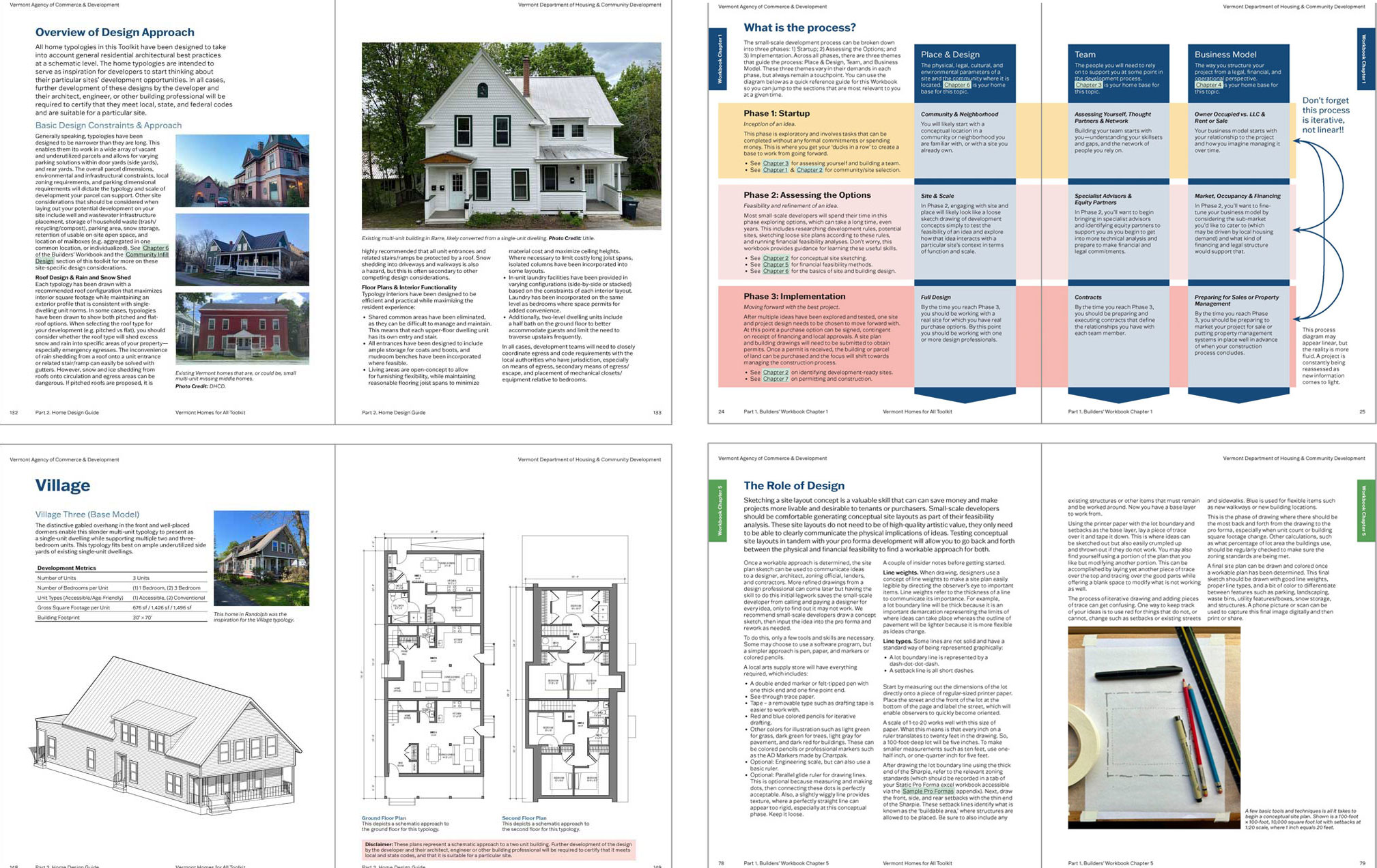
18 years ago, when Lilli West got into the real estate business, she saw a need. Back then, it was short sales and foreclosures—and she grew her business at an unlikely time when real estate agents were leaving the industry left and right. Today, as the owner of Maple Leaf Realty, the largest agency in Bennington, VT, West sees a different need: “We have run out of housing, and we desperately need new construction.”
To address this need, West thought Vermont would benefit from a checklist or roadmap for housing development, to streamline and clarify the complicated process. She was thrilled to learn that the Vermont Department of Housing and Community Development was creating this very tool to jumpstart and empower missing middle housing production.
The “Homes for All Toolkit,” launched in March 2024 and supported by AARP-VT funding, is a design-and-do guide for small-scale home builders, investors, and community leaders. It proposes missing middle homes, or MMH, as a way to deliver diverse and affordable housing choices in convenient, existing, walkable neighborhoods and places.
These home types, which include accessory dwelling units (ADUs), duplexes, small-scale multi-household buildings, and neighborhood-scale mixed-use/live-work buildings, are rooted in Vermont’s traditional development pattern and the New England vernacular style. However, over the 20th century, restrictive zoning and regulations made many of those options illegal or limited where they could be built.
The result for Vermont’s home production environment: large, expensive single-family homes, large and mid-size lots, and large-scale multi-family apartments. Vermonters looking for housing options in-between, like a duplex or four-plex, cooperative housing, senior housing units, age-friendly homes, or townhouse condominiums have very limited options.
The VT Homes for All Toolkit aims to change that.
This 220-page guide is full of tips, tools, and resources for would-be developers (and those who support their work) to build the well-located homes Vermonters need at different scales designed to cater to a range of income levels, family sizes, and lifestyles. It includes three components:
- Builders’ Workbook: A Missing Middle Home builders’ ‘how-to’ workbook that provides a comprehensive road map to real estate development for first-timers. This workbook provides guidance on a variety of considerations—including regulations and zoning, financing, infrastructure, and design, with advice on potential partners able to help beginner developers achieve success.
- Missing Middle Homes Design Guide: A design guide for Missing Middle Homes drawing from local architectural traditions that are familiar and loved by Vermonters—as well as suitable for New England’s variable weather.
- Vermont Neighborhood Infill Design Case Studies: A series of five case studies developed in cities and towns throughout Vermont (Bellows Falls, Arlington, Rutland, Vergennes and Middlesex) showing how MMH building designs can be integrated into existing neighborhoods and communities using illustrated visualizations.
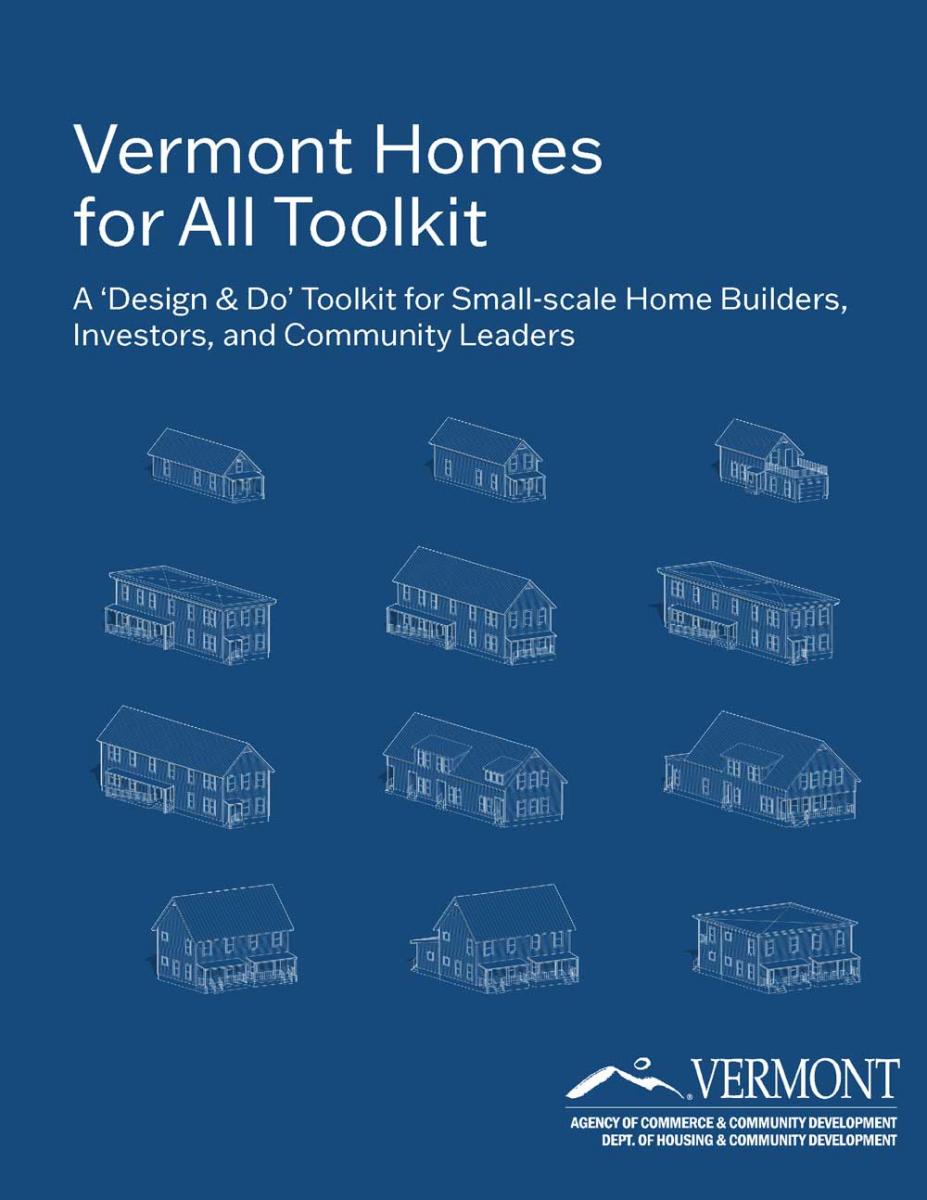
But the Toolkit is much more than its component parts. It is the start of a movement to bring missing middle housing back to Vermont communities, an opportunity to grow a new generation of developers who value “return on community” as much as return on investment. It is a statewide clarion call to support these developers and their work through common-sense regulatory and financial solutions.
This was evident on March 14, when the VT Homes for All Toolkit launched to a maximum capacity crowd at the Toolkit Trainer Summit in Barre City.
The half-day event was an energizing occasion to connect, network, and learn for novice and emerging small-scale home builders, community development professionals, and local leaders interested in innovative home-building and home-renovation solutions. The Summit included a Vermont small-scale developers’ panel featuring stories and advice from four current developers, and an interactive activity where attendees were encouraged to “think like a developer” and design a missing middle housing site plan. Using a base map, resource packet, and a kit of parts—including three of the new VT missing middle home typologies—participants worked through a set of common development constraints such as environmental, regulatory, and infrastructure. They then identified developable area and configured the site plan, being mindful of parking requirements, driveway access, outdoor gathering space, and considerations like snow melt that are familiar to Vermonters.
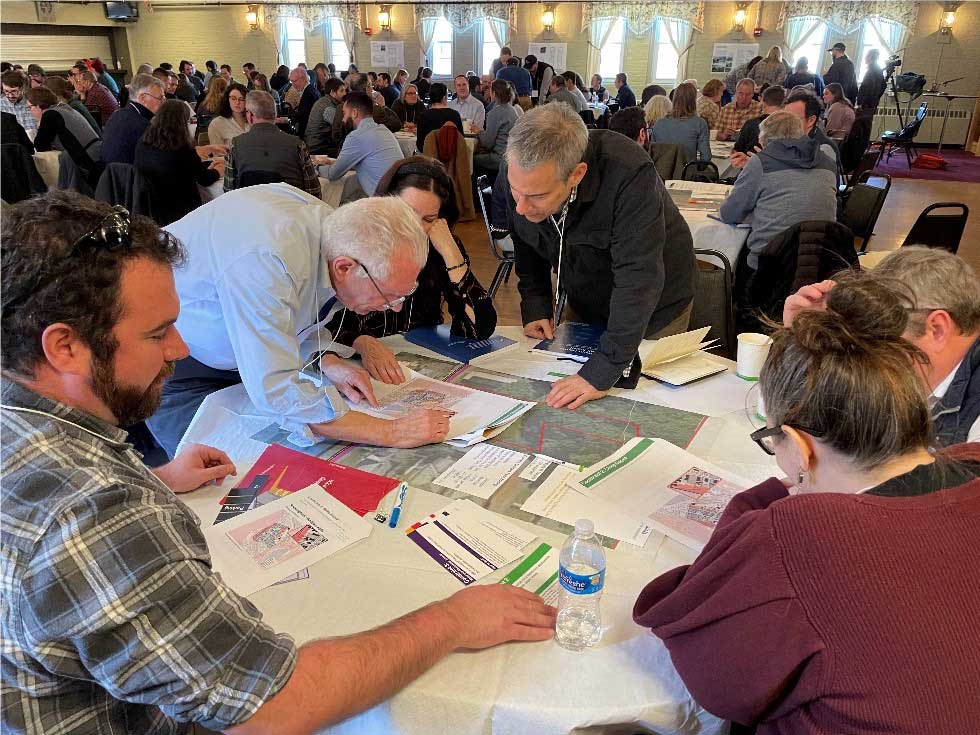
Summit attendee Ravi Venkataraman—who is a planner with the City of Burlington, lecturer at the University of Vermont, and PhD candidate in Planning at Virginia Tech—says the activity animated the Toolkit in a practical way. “The ‘think like a developer’ activity brought together the dimensional requirements concepts with the places we walk by every day,” said Venkataraman. “Having developers in the room too clarified not only the impacts of small changes to, say, setbacks and lot coverage on the built environment, but also how such small changes affects small developers, renters and homebuyers alike.”
The story of Homes for All
The Homes for All Toolkit was years in the making, and it was not born in a vacuum.
“The Vermont Department of Housing & Community Development (DHCD) strives to keep tabs on innovations around the Country,” explains Planning & Policy Manager Jacob Hemmerick—especially when it comes to untying the Gordian knot that is the housing crisis. He points to development-ready community checklists popping up in places like Maine and Michigan, pre-approved house plan sets such as “Build South Bend” in Indiana, and emerging non-profits like the Incremental Development Alliance’s small-scale developer training.
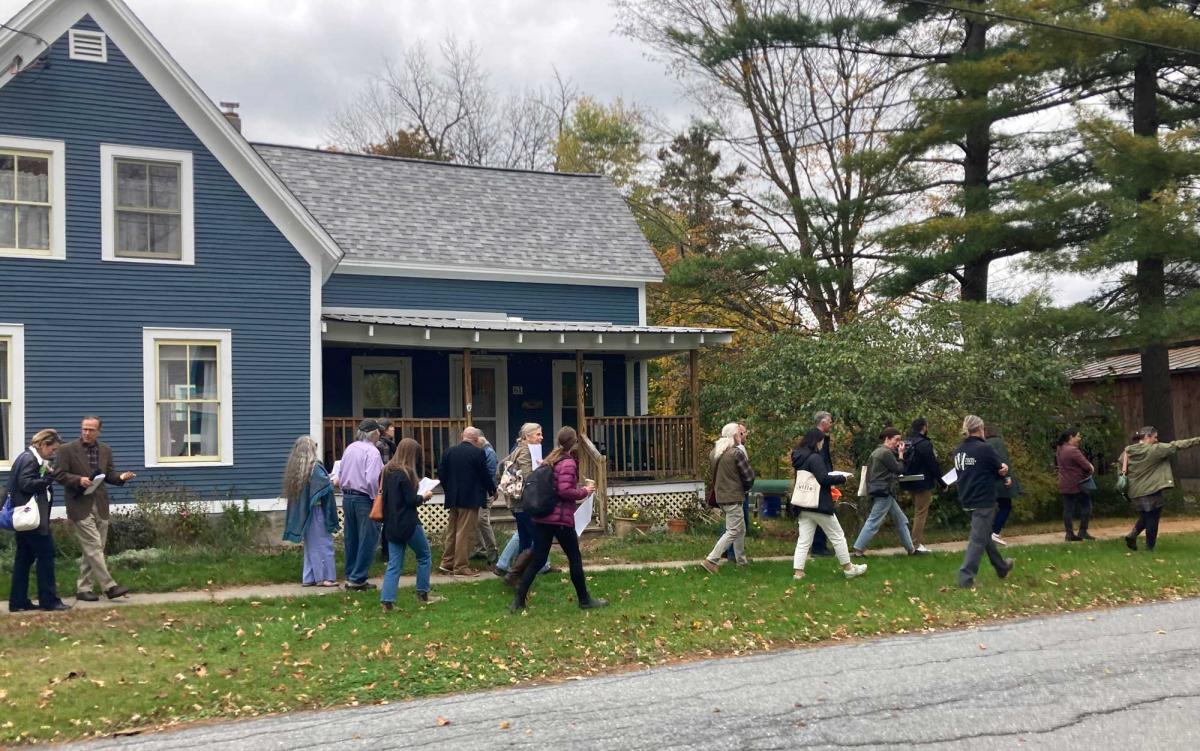
DHCD saw an opportunity to offer a step up for small-scale developers in Vermont’s unique market. It was an idea to challenge market forces suppressing missing middle homes and builders, and it spoke to the indomitable spirit of Vermonters and their passion for local solutions scaled for our rural economy. The Governor’s team and Senator Michael Sirotkin, former Chair of the Senate Committee on Economic Development, Housing and General Affairs, saw the potential and supported funding for this project in the Omnibus Housing Bill in 2022. The Department then framed up the project, attracted strong interest in the consulting contract, and hired Utile Planning & Design, a firm with extensive experience in both affordable housing and the New England context.
Over the past year, the Homes for All team engaged dozens of folks across the state, from experts across the building professions to bankers and real estate agents. The team also led neighborhood infill studies with local advocates in five communities and conducted precedent research in many more. One of those communities was Bellows Falls, which applied to participate in the project as a pilot infill site.
“This toolkit is imperative for small downtowns like Bellows Falls, where there is so much passion for the community and housing, but a gap in development skills. The toolkit helps to fill that gap by providing step by step guidance to developing new housing for new or emerging housing providers,” says Sarah Lang, Administrator of the Rockingham/Bellows Falls Incremental Development Working Group, or RIDWG. She added that the Toolkit was one step in “a long list” that RIDWG has taken to advance incremental development in the community.
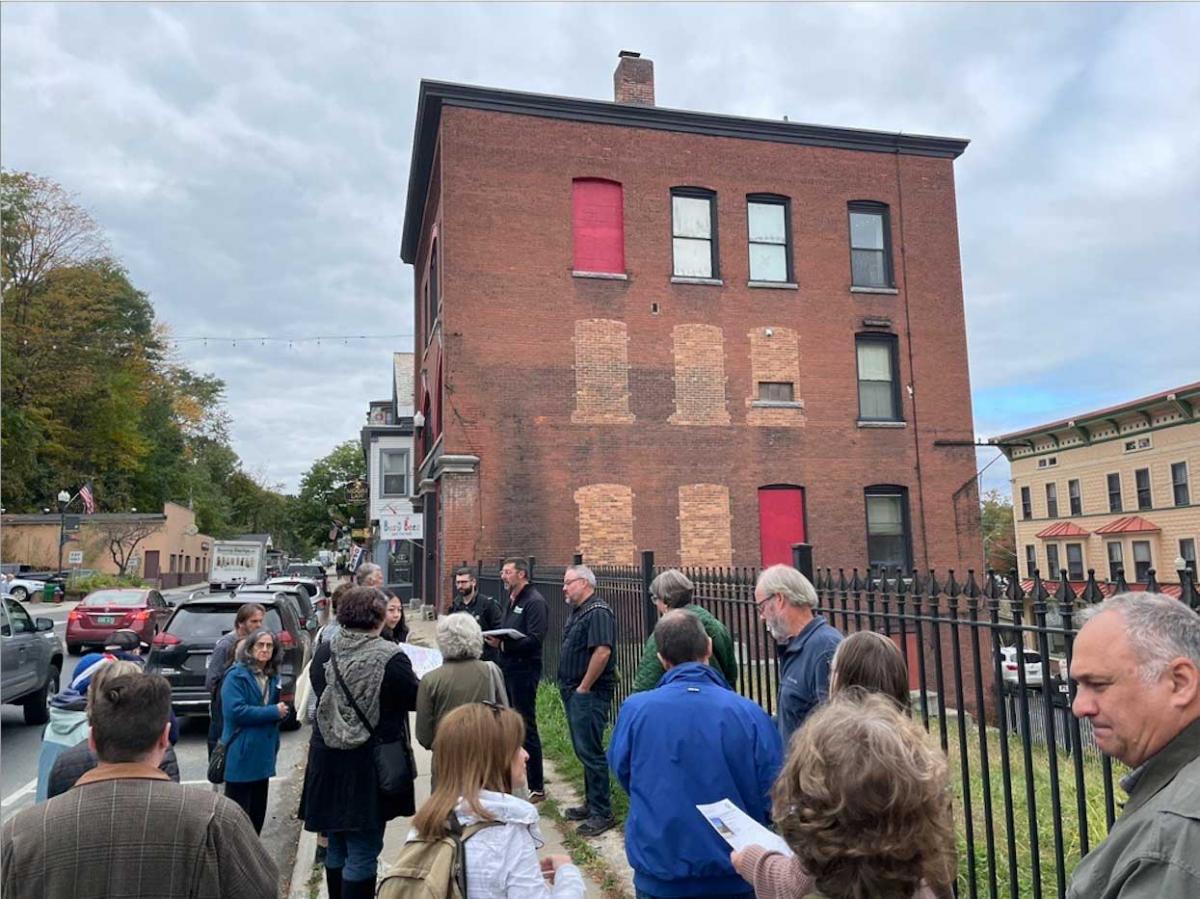
Homes for All was supported by a Steering Committee and design subgroup representing industry leaders and allied professions throughout Vermont. Lessons learned transcended the Toolkit itself, and include additional needs for hands-on training, modular construction options, and continued land development regulation reform by locals.
Importantly, infill housing is facilitated by, and reinforces, recent advances and innovations in Vermont’s regulatory landscape, including code reform, historic statewide housing legislation, incentive programs to locate housing in compact, walkable communities, and new funding streams to support Accessory Dwellings Units and middle-income housing renovation and production.
And the work continues. “We are working hard in the legislature this session to ensure that land use, permitting, and density are all addressed in ways that promote housing development, not limit it,” says Alex Farrell, Commissioner of the Department of Housing and Community Development. “Infill and missing middle housing represent practical solutions to growing our housing stock that can serve as the building blocks for vibrant, equitable, and adaptable neighborhoods.”
What’s next for Homes for All
Vermont has a plan to keep bringing missing middle housing back online and keep the momentum generated by the Toolkit’s launch going.
The Toolkit’s four missing middle housing typologies proposed in the toolkit will be starting points for a pre-approved plan set of context-sensitive designs ready for use around the state, along with regulatory efficiencies, to make housing development more predictable and affordable—as time is money in real estate. Vermont would become one of the first states to produce such a pre-approved plan set.
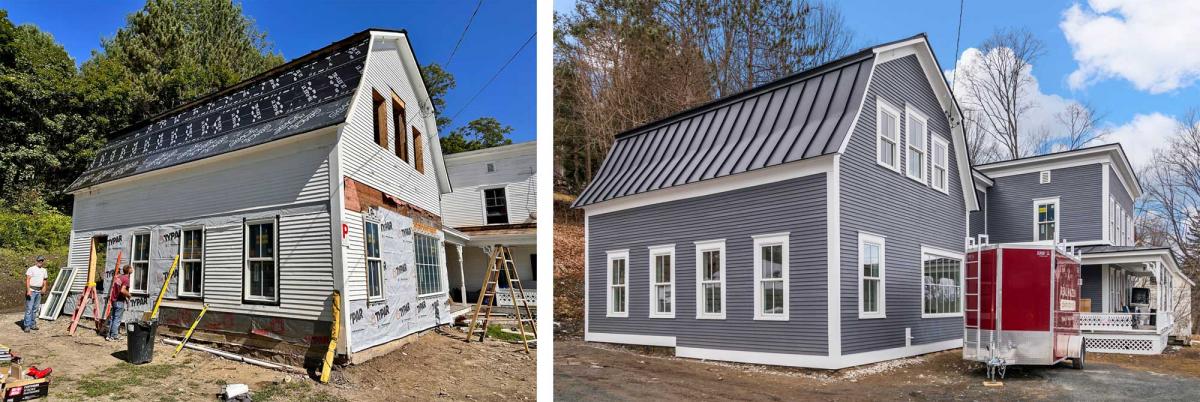
Later this year, the Department will also launch the first round of a live training cohort to coach a group of aspiring developers through the Builders’ Workbook with hands-on project support, technical assistance, and networking opportunities.
“This is representative of a sea change,” said Seth Leonard, Managing Director of Community Development at the Vermont Housing Finance Agency, at the Homes for All Summit on March 14. “Housing is the backbone of our economic vibrancy, of our diversity, of our shifting demographic realities for the future. We have to focus on who’s building and developing in Vermont in a new way.”
The Homes for All project is on track to attract and support and new generation of grassroots investors, local champions, and developers—especially first-time, women and BIPOC builders committed to their communities and ready to build walkable neighborhoods.
One such aspiring developer is Lilli West, the Bennington-based broker whose other hats include investor, renovator, and landlord. Now, West is making the transition to small-scale developer with her new company, Solutions Development. It’s an apt name because West, like many Vermonters, knows this moment of housing shortage calls for innovative solutions, and leaders to pilot them, on the path to providing homes for all Vermonters.
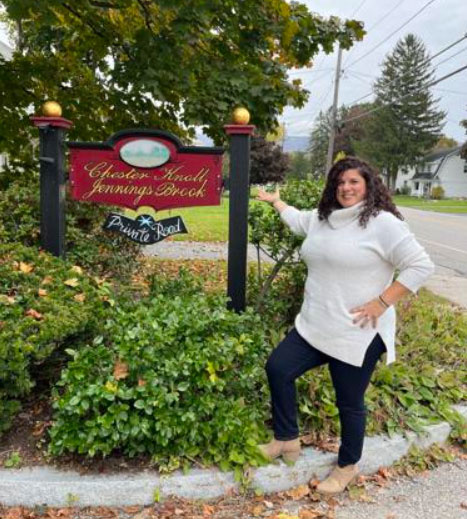
The Homes for All Toolkit and materials—including dynamic pro formas—are available to view and download for free at: https://accd.vermont.gov/homesforall.

Vermont
Bernie Sanders says Trump's 'lying' when he claims Kamala Harris is more liberal than the Vermont senator
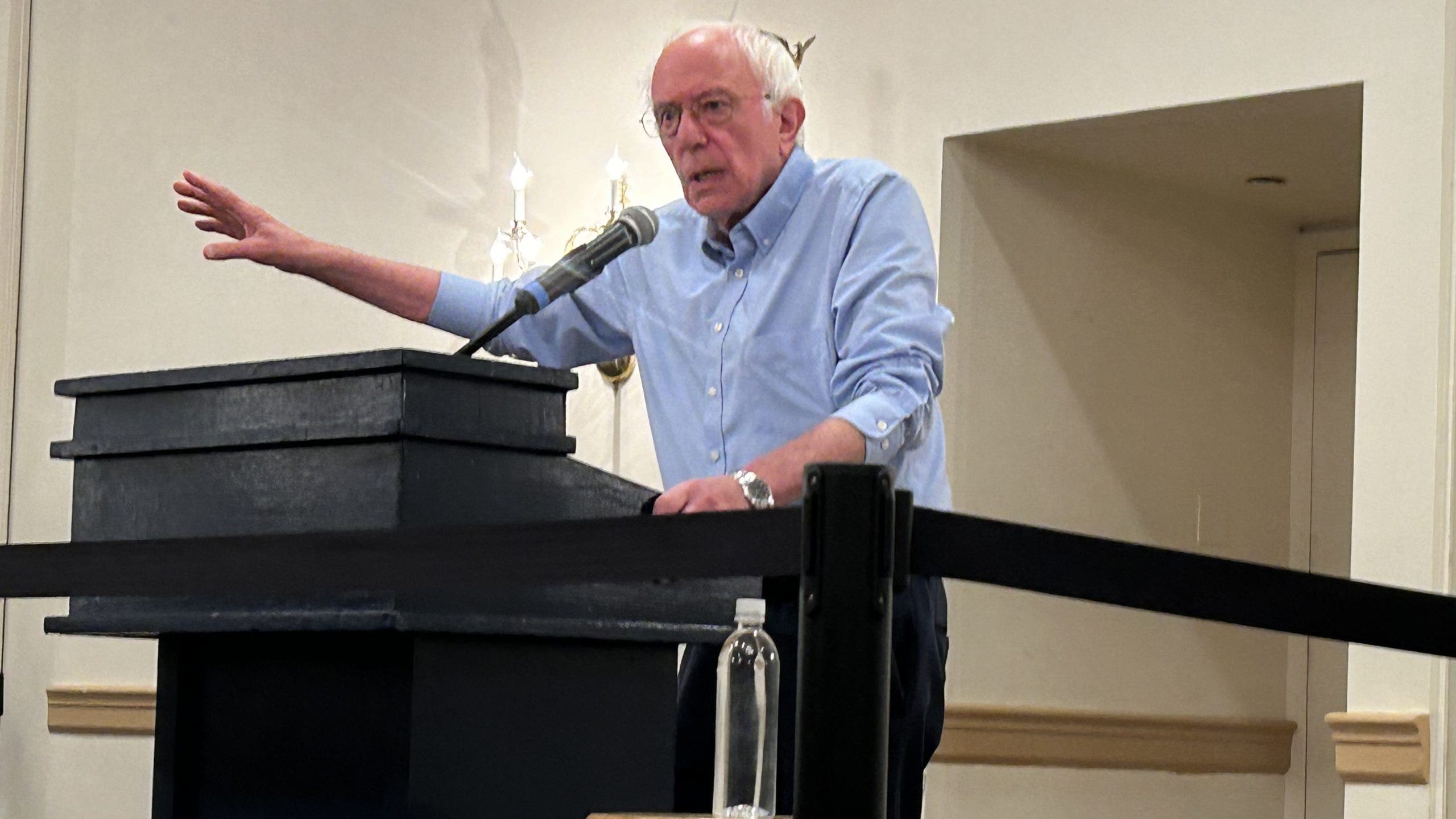
EXCLUSIVE: WEST LEBANON, N.H. — When it comes to Sen. Bernie Sanders, former President Trump is no laughing matter.
The longtime independent senator from Vermont, progressive champion and two-time runner-up in the Democratic presidential primaries is on a two-day swing this weekend in neighboring New Hampshire as well as Maine to campaign on behalf of Vice President Kamala Harris to make sure the GOP presidential nominee doesn’t return to the White House.
“Trump cannot get elected. We’ve got to do everything we can to make sure that does not happen,” Sanders told a crowd of supporters during his first stop Friday in New Hampshire, a key swing state in presidential elections.
TRUMP MOVES TO DEFINE HARRIS AS ULTRA-LIBERAL
Sen. Bernie Sanders of Vermont speaks to supporters at a campaign event on behalf of Vice President Kamala Harris in West Lebanon, New Hampshire, on Friday. (Fox News – Paul Steinhauser)
But minutes earlier, Sanders briefly broke out in laughter when asked in a national exclusive interview with Fox News about comments from Trump this week arguing that Harris — who has replaced President Biden at the top of the Democrats’ 2024 national ticket — is more liberal than the Vermont senator.
Trump over the past week has worked to define Harris, a former San Francisco district attorney and California attorney general, as an ultra-liberal, pointing to her record in the U.S. Senate and as vice president.
WHITMER CHARGES VANCE HAS ‘ABSOLUTELY BETRAYED’ HIS WORKING CLASS ROOTS
Speaking to a packed arena in Charlotte, North Carolina, on Wednesday, Trump charged that Harris was the “most incompetent and far-left vice president in American history… She is a radical left lunatic who will destroy our country if she ever gets the chance to get into office.”
And mentioning Sanders, Trump argued that Harris is “more liberal than Bernie Sanders. Can you believe it?”

Former President Trump speaks at a campaign rally in Charlotte, North Carolina, on Wednesday. (AP Photo/Matt Kelley)
Sanders, responding, said, “I would hope that when he said, ‘Can you believe that?,’ people said no.”
“It’’s not true. Once again, Trump is lying,” Sanders emphasized. “Let me just simply say that for better or for worse, Kamala Harris is not more progressive than I am.”
During his Fox News interview and later at his event, Sanders took aim at Trump, who two months ago was convicted of 34 felony counts in the first criminal trial of a former or current president in the nation’s history.
“This is the most important election, I think, in our lifetimes. I will do everything that I can to see that Donald Trump is defeated,” the senator stressed.
REPUBLICANS ARGUE HARRIS REPLACING BIDEN AT TOP OF DEMOCRATS’ TICKET ‘UNDEMOCRATIC’
Sanders argued that “the American people will not and cannot accept a president who is a pathological liar, somebody who believes that women should not be able to control their own bodies, somebody who in the midst of massive heatwaves thinks climate change is a hoax and somebody who actually does not believe in democracy, has not said that he will accept those election results if he loses. So, for all of those reasons, Trump must be defeated.”
Sanders is campaigning on behalf of Harris, but he hasn’t formally endorsed the vice president.

Vice President Kamala Harris arrives for a campaign event in Milwaukee on Tuesday. (Daniel Steinle/Bloomberg via Getty Images)
“I think if the vice president is to win this election, and obviously I want her to win, I think she has to start talking about issues of relevance to the working class of this country, because there are tens of millions of people who are really hurting,” Sanders explained. “They want to know what the next president is going to do for them, and I hope very much that Vice President Harris will make that clear.”
“The path towards victory is to talk about issues that are relevant,” he reiterated.
Asked what Harris specifically needs to detail, Sanders said, “I hope that the vice president will be talking about the need to substantially lower prescription drug costs… the need to have tax reform so the wealthiest in this country start paying their fair share of taxes, so we can greatly expand child care and affordable housing in this country, and I think we’ve got to be very strong on the issue of climate change and make it clear that we’re going to transform our energy system away from fossil fuel if we’re going to save this planet for future generations.”
Sanders said that Harris’ choice of a running mate — which is expected to come in the next two weeks — will be a signal of whether she will project a progressive agenda as she runs for the White House.
“I think it will, and I hope very much she looks at one of the many progressive people who are out there who I think would do a good job as vice president,” the senator said.
Sanders was making his swing through New Hampshire and Maine less than a week after President Biden suspended his 2024 re-election rematch with Trump. Biden made his move amid mounting pressure from within the Democratic Party for him to drop out after a disastrous performance in last month’s first presidential debate with Trump.
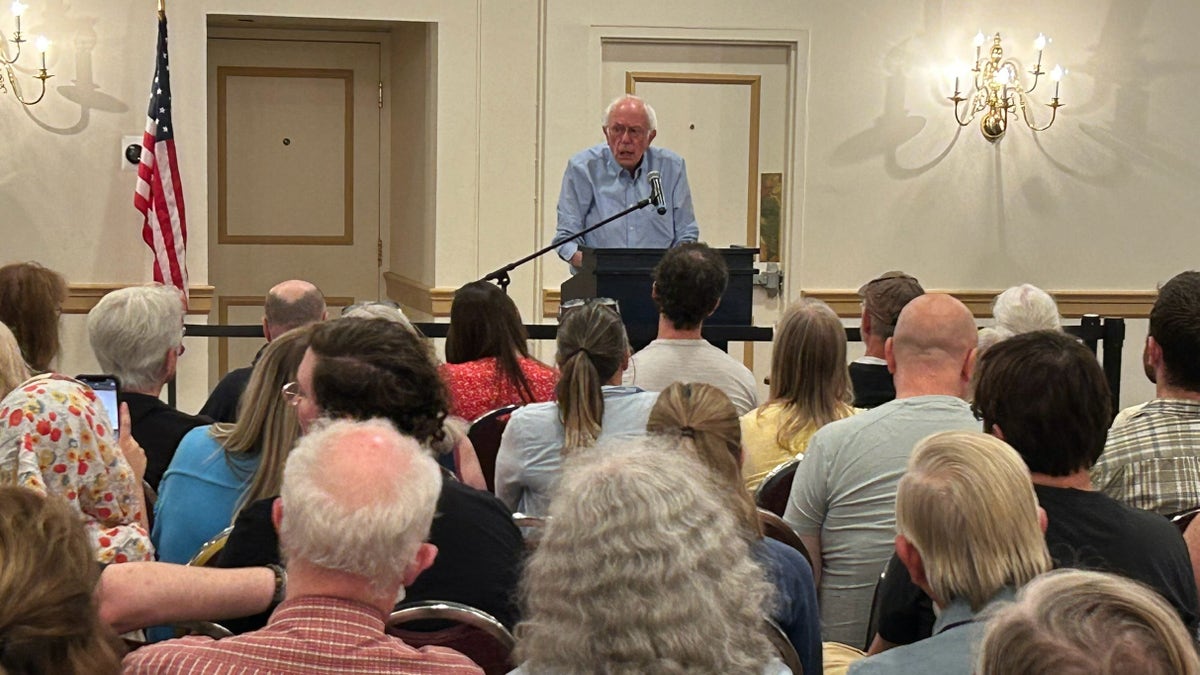
Sen. Bernie Sanders of Vermont speaks to supporters at a campaign event on behalf of Vice President Kamala Harris in West Lebanon, New Hampshire on Friday. (Fox News – Paul Steinhauser)
The embattled president’s immediate backing of Harris ignited a surge of endorsements of Harris by Democratic governors, senators, House members and other party leaders. By Monday night, the vice president announced that she had locked up her party’s nomination by landing the backing of a majority of the nearly 4,000 delegates to next month’s Democratic National Convention. On Friday morning, former President Obama and former first lady Michelle Obama were among the final major party leaders to endorse the vice president.
Harris has also hauled in a staggering $129 million in fundraising since Biden’s announcement, her campaign touted on Thursday morning.
CLICK HERE TO GET THE FOX NEWS APP
Republicans charge that the process has been anything but democratic — and they point to Biden’s own words.
Before dropping out, the president had repeatedly cited the 14 million votes he won in this year’s Democratic presidential primaries as a reason he should stay in the 2024 race.
“The voters — and the voters alone — decide the nominee of the Democratic Party,” he emphasized in a letter on July 8. “Not the press, not the pundits, not the big donors, not any selected group of individuals, no matter how well intentioned.”
Trump, at his rally in Charlotte on Wednesday, called the switch at the top of the Democrats’ national ticket “an undemocratic move.”
“These are nasty people, the Democrats,” Trump argued.
And Republican Sen. Tom Cotton of Arkansas claimed in a social media post this week that “Joe Biden succumbed to a coup by Nancy Pelosi, Barack Obama, and Hollywood donors, ignoring millions of Democratic primary votes.”
But Sanders, who argued during his marathon 2016 Democratic presidential primary battle against eventual nominee Hillary Clinton that the party was working against him, doesn’t buy the GOP criticism.
“These are extraordinary times and the Democrats had to move very quickly,” Sanders said. “So I think that given the reality that Biden dropped out and having a Democratic convention coming, I think what happened is she announced her candidacy, she rallied the support she needs, and I think that’s fine.”
Get the latest updates from the 2024 campaign trail, exclusive interviews and more at our Fox News Digital election hub.
Vermont
Wolfsgart car show to kick off in Essex Junction

ESSEX JUNCTION, Vt. (WCAX) – Car enthusiasts will converge in Essex Junction on Friday for the annual Wolfsgart show.
Cars of all makes and models will be parked at the Champlain Valley Expo this weekend.
Gates open for spectators at 9 a.m. on Friday with events scheduled through Sunday.
You can find tickets here.
Copyright 2024 WCAX. All rights reserved.
Vermont
Vermont Primary Election 2024: What to know about early voting

The Aug. 13 statewide major party primary is less than a month away and early voting is already underway.
In this election, Republican, Democratic and Progressive contenders will vie for their party’s nominations in the following races: U.S senator, U.S representative, governor, lieutenant governor, treasurer, secretary of state, auditor of accounts, attorney general, the state Senate (30 seats), state Representative (150 seats) and high bailiff (14 seats).
Primary winners face off against each other and minor party candidates in the Nov. 5 general election.
For Vermonters interested in casting your ballot prior to election day, below is a complete guide to early and absentee voting.
What do I need to know about early and absentee voting?
Any registered voter may request an absentee or early ballot via mail, phone, online or in person. Family members and healthcare providers are also allowed to advocate for a voter to receive an absentee ballot.
Voters can request and track the status of an early voter absentee ballot online by logging into their My Voter Page at https://mvp.vermont.gov/. Ballots can be returned through the mail or in person, unless delivered by justices of the peace on the day of the election, who will bring the ballot back with them.
Absentee or early ballots are available no later than 45 days prior to the primary or general election and 20 days before a municipal election using secret ballots.
For more information about absentee or early voting, visit the Absentee Voting FAQs page or Early & Absentee Voting page. Voters can also contact the Elections Division at sos.elections@vermont.gov or 800-439-VOTE.
You can find your city or town clerk at https://outside.vermont.gov/dept/sos/Elections%20Division/voters/townclerkguide.pdf, from whom you can request a ballot, on the Secretary of State website.
The deadline to request early or absentee ballots is 5 p.m. the day before any election, or whenever your town clerk’s office closes that day.
Megan Stewart is a government accountability reporter for the Burlington Free Press. Contact her at mstewartyounger@gannett.com.
-

 World1 week ago
World1 week agoOne dead after car crashes into restaurant in Paris
-

 Midwest1 week ago
Midwest1 week agoMichigan rep posts video response to Stephen Colbert's joke about his RNC speech: 'Touché'
-

 News1 week ago
News1 week agoVideo: Young Republicans on Why Their Party Isn’t Reaching Gen Z (And What They Can Do About It)
-

 News1 week ago
News1 week agoIn Milwaukee, Black Voters Struggle to Find a Home With Either Party
-

 Politics1 week ago
Politics1 week agoFox News Politics: The Call is Coming from Inside the House
-

 News1 week ago
News1 week agoVideo: J.D. Vance Accepts Vice-Presidential Nomination
-

 Movie Reviews1 week ago
Movie Reviews1 week agoMovie Review: A new generation drives into the storm in rousing ‘Twisters’
-

 World1 week ago
World1 week agoTrump to take RNC stage for first speech since assassination attempt



